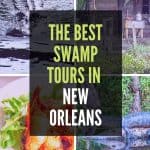What’s the difference between a swamp and a bayou? Let’s head to the murky waters of Louisiana and find out…
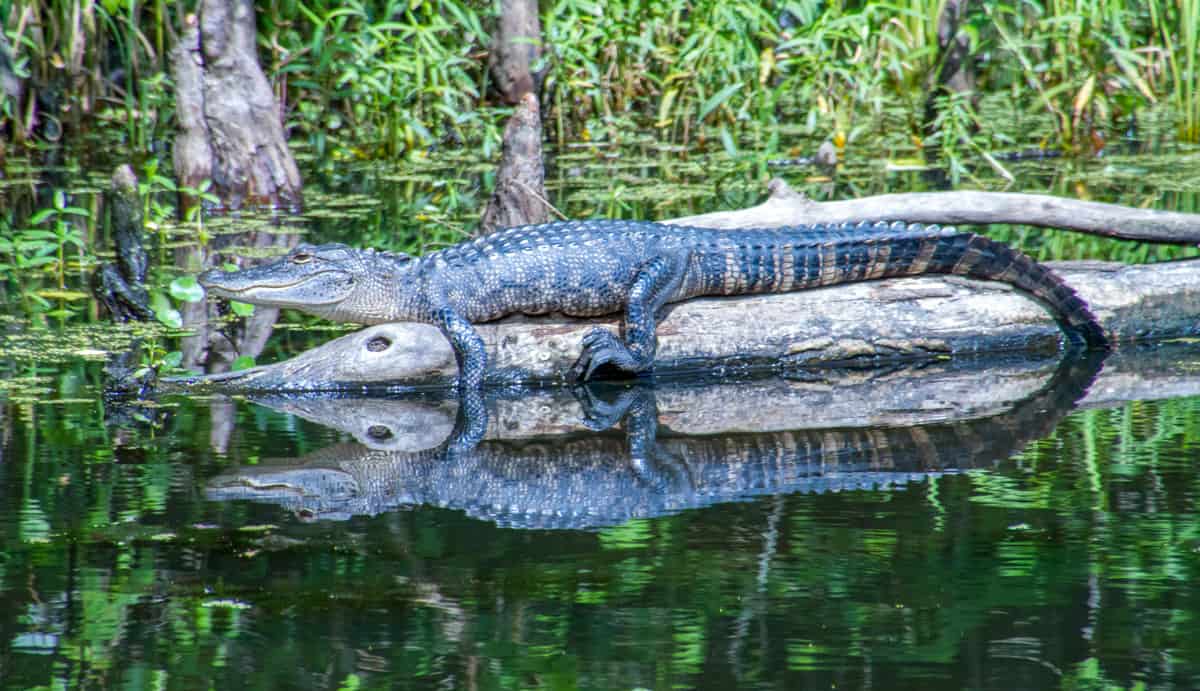
Should you visit a swamp or a bayou? What’s the difference?
When you’re planning an adventure through the southern United States or the lush jungles of Central and South America, you may come across two terms often used interchangeably: swamp and bayou. At first glance, these terms may seem like two different ways to describe a murky, marshy area of land. But swamps and bayous are unique ecosystems with distinct characteristics, flora, and fauna.
Exploring the swamps and bayous around New Orleans was a surprise highlight of my road trip around Louisiana. While the names conjured up stenches and stickiness, the reality felt fresh and fascinating.
See also this perfect New Orleans itinerary here and a New Orleans Road Trip itinerary here.
So, let’s talk about the difference between a swamp and a bayou and discover why these wet grounds are crucial to our planet’s biodiversity.
Disclosure: if you book or buy through any of the links on this page, we may earn a small commission at no extra cost to you. Cheers for that!
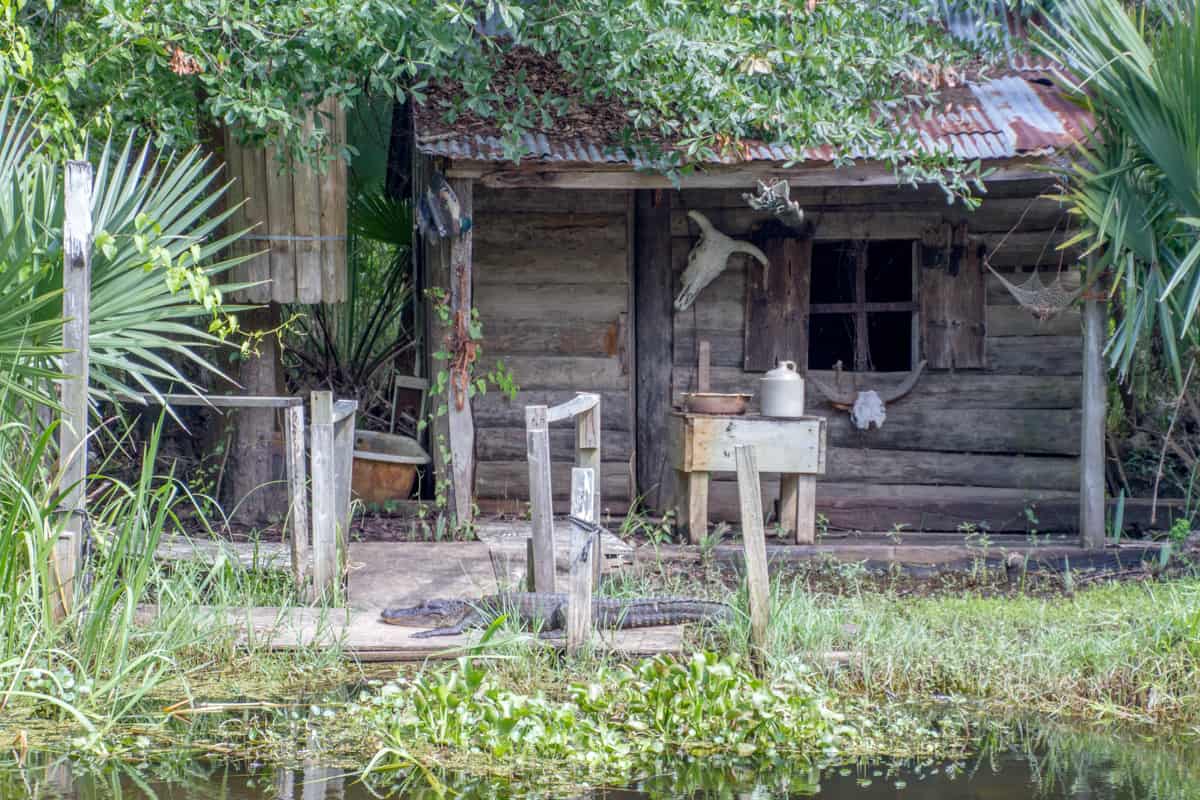
What is a Swamp?
Swamps are complex ecosystems with special geographical features that can be found all around the world. A combination of shallow water and vegetation, they support a wide variety of plant and animal life. Swamps are generally formed in areas with a high-water table, meaning that the ground is saturated with water for long periods.
One of the defining features of a swamp is its standing water. This water may be fresh, salt, or brackish, depending on the location and source of the water. Freshwater swamps are typically found in areas with high rainfall or near rivers and lakes, while saltwater swamps, such as mangrove swamps, form along coastlines and estuaries.
Where can you visit swamps
From the boreal forests of Canada and Russia to the mangrove forests of Southeast Asia and South America, swamps receive their fair share of tourists yearly. If you are focusing on the American swampy areas, the swamps of New Orleans, located just outside the city, are a hot point. Here, you can take guided tours on swamp boats and see a variety of wildlife, such as alligators, birds, and fish.
In addition to these regions, many other swamp areas around the world offer swamp tourism opportunities. Visitors can explore them in Florida, Australia, and Southeast Asia. For example, the Mekong River Delta in Vietnam is home to some of the largest mangrove swamps in the world, which can be visited through guided tours on small boats.
Swamp fauna and flora
The type of flora that grows in a swamp is largely determined by the water level. Depending on the swamp’s natural habitat, you will find certain kinds of trees, such as cypress or mangrove. Among the most common plant species here, pitcher plants have developed unique adaptations to trap insects and are exciting to see.
Swamps are also home to a diverse range of animal life, including wild boars, alligators, and snakes. Moreover, they are a delight for birdwatchers who can discover a wide variety of birds like the great blue heron or prothonotary warbler.
The ecological and cultural importance of swamps
It might sound surprising but swamps are some of the most productive ecosystems globally in terms of biomass production. Let’s not forget that they provide a home for various endangered species, such as the Florida panther and the Louisiana pine snake.
Swamps also play an essential role in regulating water flow and quality by filtering sediment and pollutants before they enter larger bodies of water. Moreover, they store water during heavy rainfall, reducing the risk of flooding downstream.
Apart from their ecological importance, swamps have played an essential role in human cultures for centuries, providing food, medicine, and building materials. Many indigenous cultures consider them as sacred spaces used for religious ceremonies.
They are also popular for recreational activities such as hiking, birdwatching, and kayaking.
Tour operators have capitalized on their ecological and cultural significance and now offer eco-tours, which provide economic benefits to local communities.
What is a Bayou?
Bayous are a type of body of water primarily found in the Louisiana wetlands, characterised by their slow-moving, often stagnant, and brackish water. They are similar to a slow-moving creek or an extremely slow-moving stream and are known for their ecological importance, providing a habitat for many plant and animal species.
Where Can You See Bayous?
Bayou tourism is a popular activity in the Gulf Coast region of the southern United States, particularly in areas like the Mississippi River Delta and low-lying regions of southern Louisiana.
One of the most famous bayous in the area is Bayou Bartholomew, considered the longest in the world. Tourists can also explore the bayous of New Orleans, where they can take part in boat tours starting in the French Quarter and see the beautiful scenery and wildlife that inhabit these wetlands.
Bayou Fauna and Flora
Bayous are home to a rich array of plant and animal life adapted to live in these unique wetland environments. Spanish moss is a common sight in many bayous, providing habitat and nesting sites for birds and insects. Bald cypress trees, with their distinctive “knees” growing out of the water, are also commonly found here and provide habitats for many species while also being used for lumber and other purposes.
Regarding fauna, alligators and catfish are two of the most iconic species found in the bayous, while Cajun crawfish are both a significant part of the ecosystem and a popular food source in Cajun cuisine. Bayous are also home to many bird species, including bald eagles, which nest in the trees along the bayou banks.
The ecological and cultural importance of bayous
The Louisiana Bayou is a prime example of the ecological importance of these wetland environments, with its wide range of plant and animal species, including alligators, catfish, and bald eagles.
But bayous are also indispensable for their pastoral purposes, with cypress trees providing shade and shelter for grazing animals.
An integral part of Cajun culture, the bayous have played a significant role in shaping the cuisine and way of life in the southern United States. The best way to experience their cultural and ecological significance is through a bayou tour, which allows visitors to explore the wetland environment in smaller boats, providing a more intimate and immersive experience.
Differences between a Swamp and a Bayou
While bayous and swamps share some similarities, such as their existence in the southeastern part of the United States, there are also significant differences between the two. A swamp is typically characterised by standing water and an abundance of woody plants such as trees and shrubs. In contrast, a bayou is a small stream or channel, often connected to a larger body of water, with lower levels of standing water and more open spaces.
Another significant difference is the cultural associations with each environment.
Swamps are often associated with Creole cultures, with their unique cuisine and music, while bayous are more commonly associated with Cajun cultures.
The American South has both, so if you are heading there, you will have the chance to experience and compare them yourself.
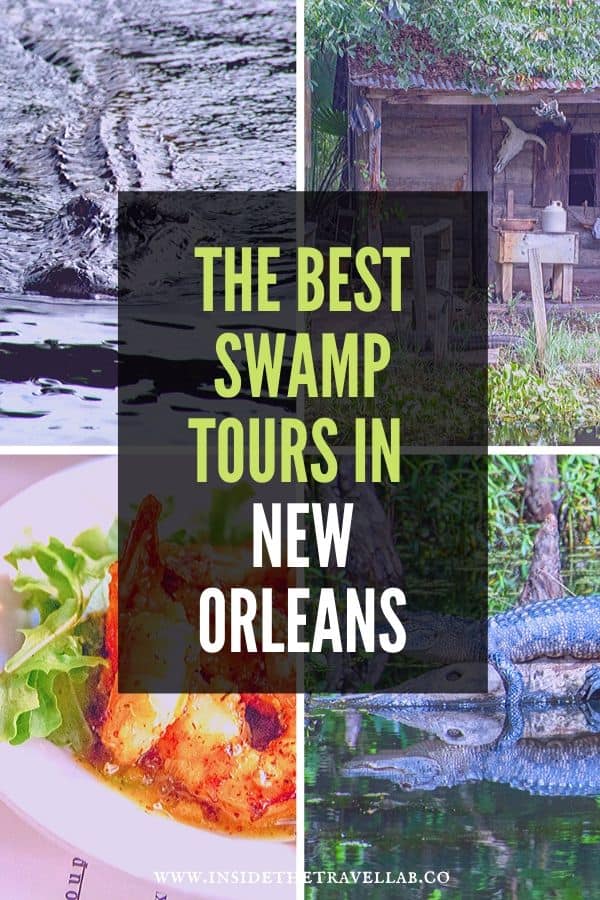
Hey, if you book through these links, I may earn a small commission at no extra cost to you. Also, I was offered these swamp tours on a complimentary basis for review purposes. Right, that’s that out of the way. Let’s get on with it!
The Best Swamp Tours in New Orleans: In Brief
1) Honey Island Swamp Tours (Dr Wagner’s) – small boats, narrated visit, beautiful landscape. Twice daily hotel pickups and 3 to 4 tours per day, depending on the season.
2) Cajun Encounters Swamp Tours – this is one of the biggest companies in town and so availability is at its best here. They also offer night swamps and are great for families.
3) Combo Swamp Tour – spend half the day on the swamp and the other half sipping mint juleps in one of the plantation houses along the Great River Road. Here’s a combination swamp tour you can book through Get Your Guide.
Why would you even want to go on a swamp tour?
New Orleans is famous for many things. Mardi Gras, the French Quarter, Bourbon Street and beignets from Cafe du Monde.
It’s indisputable that this is one of the most fascinating cities in all of America. But why is it so unusual? In part the mix of cultures who settled here, and those who were brought here against their will.
And in part, the existence of swamps.
- Without the swamps, the French and Spanish settlers could have grown their “home” ingredients and Creole cuisine would never have been born.
- Without the swamps, the devastation of Hurricane Katrina would never have come about.
- And without the swamps and their slow and cool way of life, perhaps a whole different temperament would have developed in the Deep South.
A trip to the swamps makes New Orleans make sense.
And what’s best of all? It’s close to the city AND surprisingly pleasant to do.
What are swamp tours like?
Most swamp tours set off at a fixed time and take groups onto the water of the bayous around New Orleans (a bayou is a marshy outlet of a lake or river. You pronounce it BUY-oo.)
You can expect to be on the water for typically one to two hours. The water is calm and steady and it’s fine to take children, as long as they won’t lean over the sides.
There are alligators here (it is Louisiana) so both you and any kids need to be able to follow the safety instructions. But you shouldn’t have to swim. If you do, something has gone horribly, horribly wrong ;-)
Typically the captain will give narrate as a tour guide over a loud speaker. You’re on the lookout for wildlife, like swamp hogs, magnolia, herons, egrets and turtles.
The air is often cooler than elsewhere and there are surprisingly few bugs. It may be a wise idea to wear long sleeved tops and bring bus spray just in case, though.
Most swamp boats are small: don’t expect to find a WC or cafe on board. Most places have these facilities before you board, though.
How far are the swamps from New Orleans?
Most swamp tours take place in either the Jean Lafitte National Historical Park and Preserve or the curiously named Honey Island Swamp. Each are around 30-45 minutes from the French Quarter in New Orleans.
Make sure you leave time to check in and go to the toilet. If the boat leaves without you, it won’t turn back! (Shh… In the interests of full disclosure, it did turn back for us but I was so embarrassed that I feel it my duty to make sure no one else is ever late again!)
How much time should you allow for a swamp tour?
Many tours run straight from New Orleans, picking you up at your hotel and returning you there afterwards. Most take around half a day, while others combine a swamp tour with avisit to one of the plantation houses on the Great River Road.
The advantage of booking your swamp tour this way is that it’s easy. Simply wait in the hotel lobby. The disadvantage is the time spent waiting for other people to get on the bus.
I’m a big fan of road trips, and put together this itinerary on driving from New Orleans into Louisiana. I’d highly recommend booking a swamp tour on the first morning out of New Orleans, heading on to the Great River Road and staying in one of the plantation houses overnight.
What to bring with you on your swamp tour
- Long sleeved tops are ideal but not essential.
- Bug spray is wise but not always needed.
- Bring a hat for the sun.
- Bring drinking water.
What about air boat swamp tours?
Indulge your inner CSI Miami with an air boat trip. These are the smaller boats with a large, circular fan on the back and they can zip through the swamps at a faster pace than most boats (35 mph or so.) As they’re smaller, they can also reach deeper into the bayous and can manage low tides better than the rest.
So where’s the catch? Well, they’re more expensive for one, and they’re not suitable for everyone, for the other. Children under five, pregnant women and anyone with significant musculoskeletal problems shouldn’t choose an airboat tour. I was hitting just about all three of these the last time I was in New Orleans, so I couldn’t test them out.
However, I’ve heard great things about these airboat swamp tours.
Can I kayak through the swamps?
Erm, if you must! Kayak tours run through the swamps around New Orleans. I haven’t tried them (alligator fear, unnecessary they say, but still.)
I have kayaked through the bayous in Florida (probably just as many alligators but I was ignorant at the time.) It’s a beautiful, peaceful way to see the swamps.
You won’t be able to cover as much ground but you will be able to appreciate the natural beauty so much more.
So, I haven’t tested these guys out but let me know how you get on!
>> The Manchac Swamp Mystic Wildlife Kayak Tour
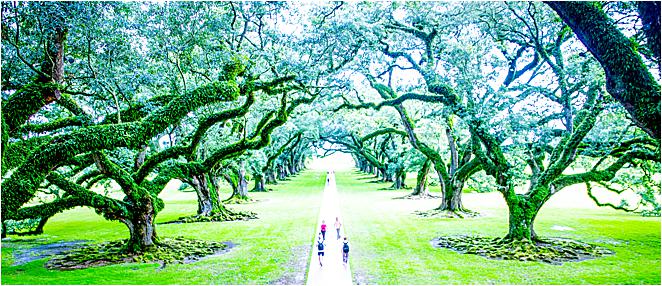
Oak Alley Plantation – one of the most famous of the Great River Road and you can combine with a full day trip to include a swamp tour
What about combo plantation and swamp tours? I really want to see Oak Alley Plantation!
I hear you! Oak Alley Plantation is absolutely amazing, though I’d also strongly recommend you hire your own car, take a road trip from New Orleans and visit the Whitney as well as more of the Deep South.
But if time is short, then a combo tour is the way to go. Swamp by morning, plantation tour by afternoon, back in the French Quarter for dinner in the evening.
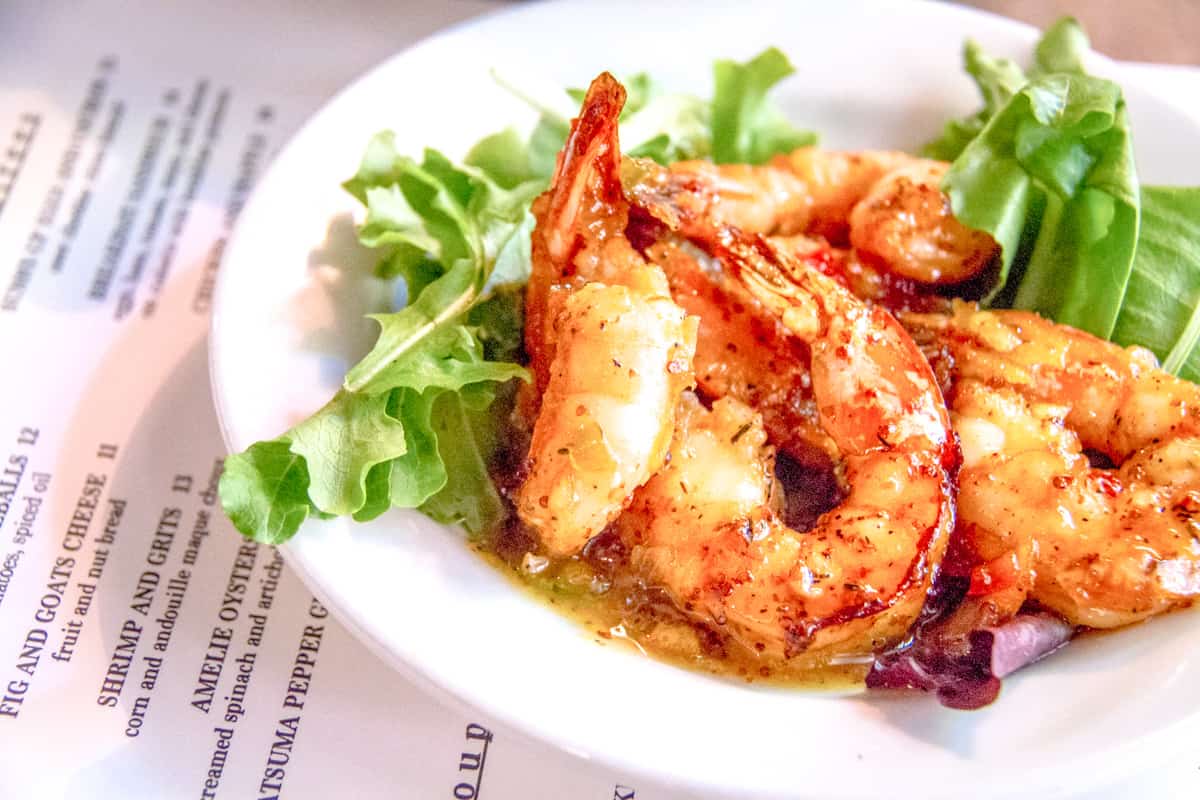
Beyond the swamps – taste the best Creole cuisine in New Orleans
More Travel Tips for New Orleans
- How to plan a New Orleans itinerary
- The best things to do in New Orleans as a family
- How to plan a New Orleans Road Trip
- Behind the Scenes: The Story of Louis Armstrong’s What a Wonderful World
- Understanding the nicknames for New Orleans
Wear comfortable shoes and a comfortable waistband! New Orleans is a city for walking and a city for eating.

